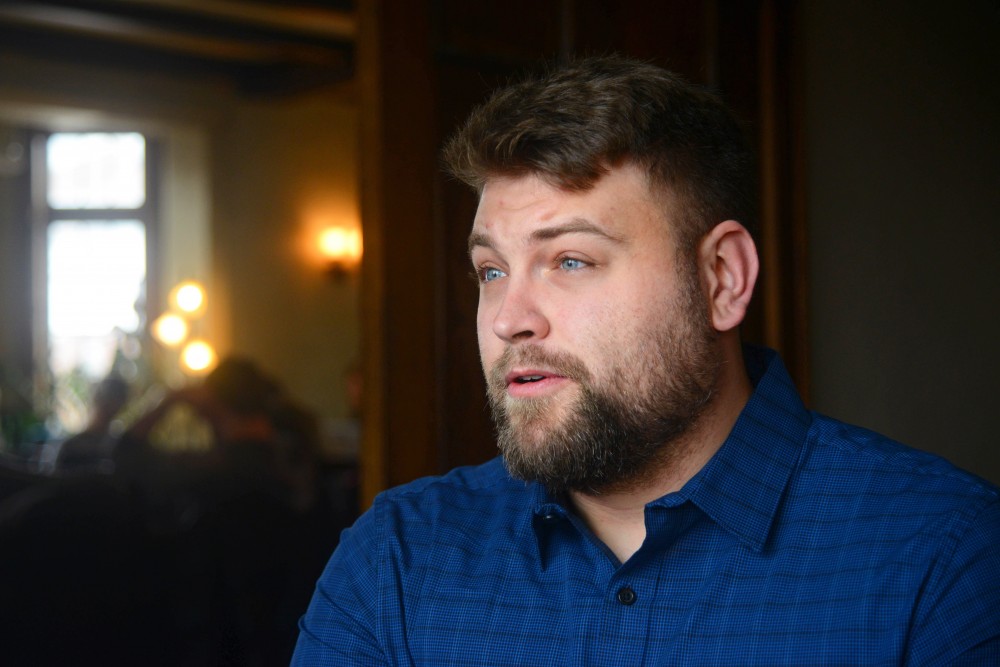Cody Olson’s farewell party at Sporty’s Pub and Grill in Como on Monday was filled with lively conversation, recounting of old memories and a toast.
Olson has led the Southeast Como Improvement Association since 2016. Prior to this role, he was an intern at SECIA while studying history and urban studies at the University of Minnesota. His next job will involve community outreach work at Metro Transit.
Olson became director during a challenging time for the association, said Karl Smith, president of SECIA. At the time, SECIA was “in a state of despair,” Smith said. The lease was up for the association’s headquarters and a large amount of paperwork needed to be done, among other issues.
“Without him, we wouldn’t be where we are today,” Smith said. “He did it with extraordinary grace and resolve.”
More students have joined SECIA during Olson’s time as director. The number of student representatives on the board increased from one to four, said Cody Hoerning, a University graduate student. Hoerning was elected to the board last fall.
Hoerning said Olson’s experience as a student helped him resolve conflicts between longtime residents and transient student renters.
“Cody, being younger and a recent student, has been able to sympathize [with] some of the issues that students have, but he’s just a great people person in regards to conflict management,” Hoerning said.
Olson also helped hire four new interns, Hoerning said.
Emily Anderson, SECIA’s community building intern and a University freshman, said Olson provided her with a balance of support and independence.
Though she’s only been with SECIA since February, Anderson said the work Olson has done makes her feel confident about the leadership transition.
“In the end, it’s going to be OK. SECIA is still going to be such a great organization after Cody moves on,” Anderson said.
Community, culture and a 24-hour work week
SECIA could only afford to pay Olson for 24 hours of work each week. Faced with the time constraint and the amount of work that needed to be done, Olson said he relied on his time management skills and support from the organization.
“I took the job knowing full well where the organization stood,” Olson said.
While director, Olson also worked with the Lind-Bohanon Neighborhood Association, located in north Minneapolis. He noted the difference between the two neighborhoods’ communities and cultures, which affected the way he did outreach.
“Engagement strategies for Como were much more event-based … things that people can see, can interact with. People can ask questions about whether they’re biking, busing or just walking through the neighborhood,” he said.
Olson was drawn to the neighborhood associations because they provide an opportunity to convey community needs to the city of Minneapolis.
“I saw it as an interesting bottom-up way of planning to allow for more community voice to see what happens around them,” he said.
Though Olson said there are some things he could have done differently, he’s proud of the overall work he accomplished.
“My hope is that I almost act as a bridge between eras; that I kept [SECIA] stable and strong enough to survive and positioned it for greater growth in the next couple of years,” he said.








